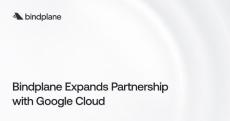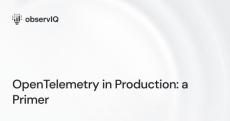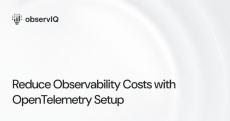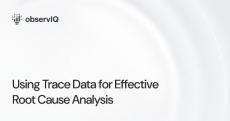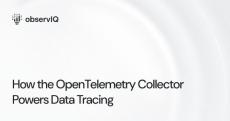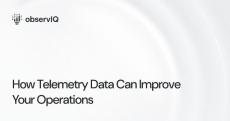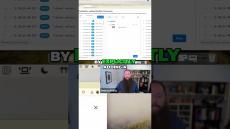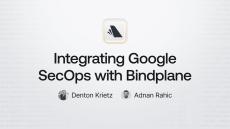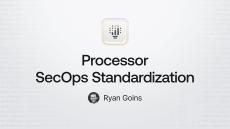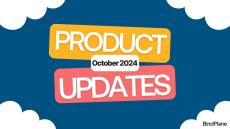|
By Joseph Howell
We're only one month into 2025, but the momentum keeps building at Bindplane. In January, we rebranded our company as Bindplane, aligning our company name with our core mission: delivering the best OpenTelemetry-native telemetry pipeline on the market. Building on that excitement, we have another announcement: we've expanded and extended our partnership with Google Cloud.
|
By Joseph Howell
OpenTelemetry has emerged as the gold standard fueling o11y and SIEM platforms, but transitioning an existing telemetry stack requires careful planning and execution. This guide outlines a practical approach to evaluating, implementing, and scaling OpenTelemetry in production environments.
|
By Ryan Goins
Winter has fully set in at Bindplane’s Michigan-based headquarters, but we’re keeping warm with the excitement from this piping-hot announcement and accompanying release. It’s just the thing to ignite the hearts, minds, and typing fingers (?) of our team and observability professionals as we kick off 2025.
|
By Paul Stefanski
Maintaining and visualizing telemetry data efficiently is super important for DevOps and SecOps teams. OpenTelemetry, a fantastic open-source observability framework, can really help with this without being too costly. Picture having a simple process that improves your data and helps your team make smart decisions without spending too much money. Let's chat about some budget-friendly ways to set up OpenTelemetry agents.
|
By Michelle Artreche
OpenTelemetry has quickly become a must-have tool in the DevOps toolkit. It helps us understand how our applications are performing and how our systems are behaving. As more and more organizations move to cloud-native architectures and microservices, it's super important to have great monitoring and tracing in place. OpenTelemetry provides a strong and flexible framework for capturing data that helps DevOps engineers keep our systems running smoothly and efficiently.
|
By Michelle Artreche
OpenTelemetry has quickly become a must-have tool in the DevOps toolkit. It helps us understand how our applications are performing and how our systems are behaving. As more and more organizations move to cloud-native architectures and microservices, it's super important to have great monitoring and tracing in place. OpenTelemetry provides a strong and flexible framework for capturing data that helps DevOps engineers keep our systems running smoothly and efficiently.
|
By Michelle Artreche
Solving system failures and performance issues can be like solving a tough puzzle for engineers. But trace data can make it simpler. It helps engineers see how systems behave, find problems, and understand what's causing them. So let’s chat about why trace data is important, how it's used for finding the root cause of issues, and how it can help engineers troubleshoot more effectively.
|
By Michelle Artreche
Starting your journey to build your first OTel Collector can be really exciting, but it can also feel a bit overwhelming. OpenTelemetry, or OTel, is an amazing tool that can help standardize the collection of observability data, but it's normal to feel a bit lost at first. There are lots of little details and best practices that can make the whole process easier, but many of us end up learning them the hard way.
|
By Michelle Artreche
OpenTelemetry, OTel, is an incredible open-source observability framework that helps you collect, process, and export trace data. It's super valuable for engineers who want to understand their systems better. At the heart of this framework lies the OpenTelemetry Collector, a pivotal component that turns raw traces into useful metrics. Let’s explore the importance of the OpenTelemetry Collector and show you how it makes it easier for engineers to make sense of data.
|
By Michelle Artreche
Telemetry data, at its core, is all about transmitting real-time information from remote sources to centralized systems for analysis and action. This data is super important across different industries due to its ability to provide immediate, actionable insights that enhance operations and strategic decision-making.
|
By ObservIQ
View the Bindplane Community Call in February for more guidance.
|
By ObservIQ
View the Bindplane Community Call in February for more guidance.
|
By ObservIQ
Use processors in Bindplane to configure batching for data that's flowing into SecOps. View the full hands-on workshop for more guidance.
|
By ObservIQ
Set log ingestion attributes and labels in Bindplane to identify data that's flowing into SecOps. View the full hands-on workshop for more guidance.
|
By ObservIQ
Google SecOps (formerly Chronicle) is Google Cloud's security operations platform (SIEM) that helps you detect, investigate, and respond to cybersecurity threats. Integrating Bindplane enables an easy way of standardizing how you efficiently collect, process, and forward security-relevant data to Google SecOps. In this webinar you’ll get a hands-on demo of how to configure log collection with the BindPlane Agent, and best practices for data standardization using open standards and OpenTelemetry. This will let you focus on the important task of investigating threats with Google SecOps instead of configuring telemetry pipelines.
|
By ObservIQ
Learn how to standardize data being routed to Google SecOps About observIQ: observIQ brings clarity and control to our customer's existing observability chaos. How? Through an observability pipeline: a fast, powerful and intuitive orchestration engine built for the modern observability team. Our product is designed to help teams significantly reduce cost, simplify collection, and standardize their observability data.
|
By ObservIQ
I'm covering our powerful new feature: the coalesce processor in BindPlane! I’ll walk you through how to use it to simplify your telemetry data by merging mismatched field names—like user and username—into one unified field (usr). We’ll configure a BindPlane Gateway, capture telemetry from various sources, and route it all to Honeycomb and S3. With the coalesce processor, field names get standardized quickly, making your dashboards and alerts far more intuitive.
|
By ObservIQ
Learn how to cut IT observability costs with OpenTelemetry. We'll cover ways to streamline data collection, reduce hidden expenses, and optimize data management. Discover practical tips for handling telemetry data efficiently, avoiding vendor lock-in, and improving system performance. Watch this video for actionable insights and real-world examples of using OpenTelemetry to manage costs effectively.
|
By ObservIQ
We’ve rolled out some fantastic updates to BindPlane in July! Here’s what’s new: These updates are designed to streamline your workflow and enhance your data management experience.
|
By ObservIQ
Businesses require a single cohesive view across all systems as they increasingly shift to running today's modern interconnected application stacks.
- February 2025 (5)
- January 2025 (4)
- December 2024 (1)
- October 2024 (6)
- September 2024 (10)
- August 2024 (6)
- July 2024 (6)
- May 2024 (11)
- April 2024 (2)
- March 2024 (7)
- February 2024 (2)
- October 2023 (6)
- September 2023 (7)
- August 2023 (8)
- July 2023 (10)
- June 2023 (5)
- May 2023 (8)
- April 2023 (6)
- March 2023 (4)
- January 2023 (1)
- December 2022 (2)
- November 2022 (5)
- October 2022 (3)
- September 2022 (3)
- August 2022 (7)
- July 2022 (9)
- June 2022 (4)
- May 2022 (5)
- April 2022 (1)
- March 2022 (1)
- January 2022 (1)
- December 2021 (1)
- November 2021 (3)
- October 2021 (6)
- September 2021 (10)
- August 2021 (11)
- July 2021 (5)
- June 2021 (3)
- May 2021 (2)
- April 2021 (2)
- March 2021 (3)
- January 2021 (3)
- September 2020 (1)
- July 2020 (3)
Built by engineers for engineers, observIQ's solutions accelerate, simplify, and enhance observability across today's hybrid environments.
Our mission is to build the best open source observability solutions for DevOps and ITOps. Our open source log agent is a highly configurable, high-performance agent made for ELK logging within the ELK stack, featuring a full library of pre-built log plugins to support your existing applications.
Benefits of observIQ Cloud:
- Deploy In Minutes: Quickly configure end-to-end log management using one-line agent installation commands, guided remote configuration, and over 40 pre-built integrations.
- Aggregate Logs At Scale: Our high performance, open source log agent, Stanza, is designed with performance and resilience in mind, allowing you to confidently deploy at any scale.
- Utilize Powerful Visualization and Analysis: Search, filter, and visualize your events with ease using our customized version of Kibana. Dashboards are auto-installed for each integration so you can get to root cause quickly.
- Reduce MTTR With Simplified Diagnosis: Logs are automatically parsed and enriched with critical environment information, providing the context needed to easily trace events to the failing application, container, or service.
- Enable Immediate Response: Using customizable threshold-based alerts, you can notify on critical events from your application or infrastructure. Leverage your existing alerting workflows using e-mail or 3rd party applications like Slack and Pagerduty.
- Apply Simple Lifecycle Management: Manage your fleet of agents and integrations, all from a user-friendly interface. Save time by updating all of your agents with a single click.
The intuitive log management platform that ITOps and DevOps actually want to use.


